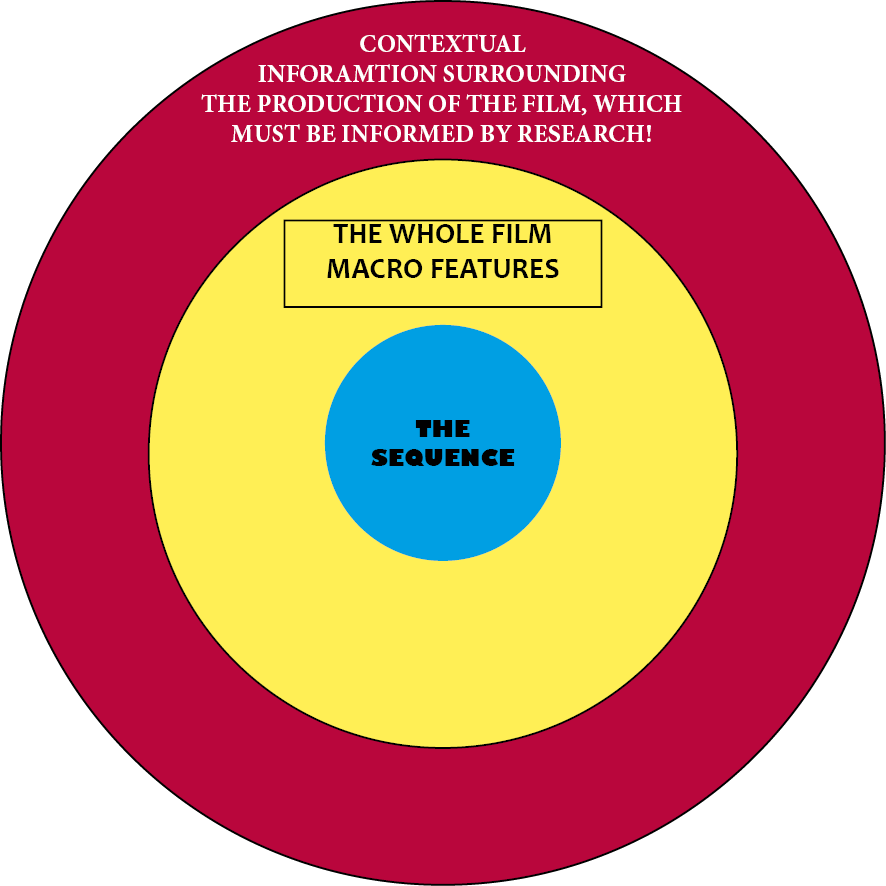During this week you should be completing a close micro analysis of your sequence from your film.
So, let’s get down to the micro…
This is a process that you should be familiar with:
- Identify specific examples of production techniques:
- Cinematography
- Editing
- Sound
- Mise-en-scene
- These examples must be named with a technical term
- Analyse the impact that technique, in combination with others, on the audience?
- How do ‘we’ read the text?
Previous blog posts that contain most of the terms your need:
Cinematography
Sound Design
Production Design
Editing
Here are our mind maps on the four micro elements.
Studying the sequence
You should watch the sequence a minimum of five times.
- The first watch without stopping to get the gist of the sequence and place it the narrative context of the whole film.
- The second and third time should be a stop start screening, where you are looking for specific examples of the film element you are focusing on. You should also consider the immediate emotional impact of the technique (in combination with other micro areas) on the spectator.
- The fourth time should be to consider the representation of the characters. What do we now know about the characters that we didn’t know at the beginning of the scene?
- The fifth is to try and think about the scene within the whole film how does it contribute to the development of the characters and themes within the whole film
Here are documents to help you make notes on the four micro features as you watch the sequence.

